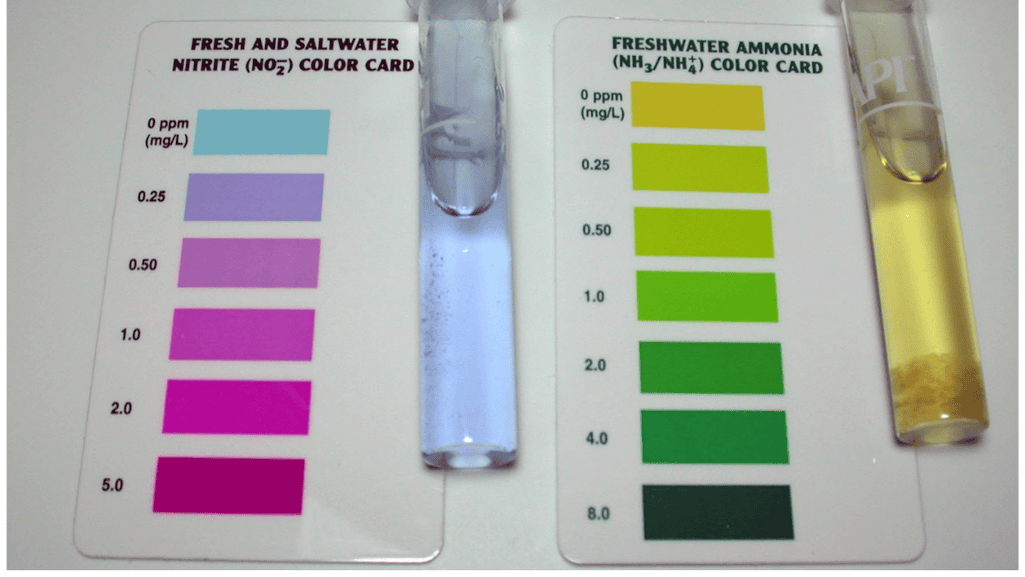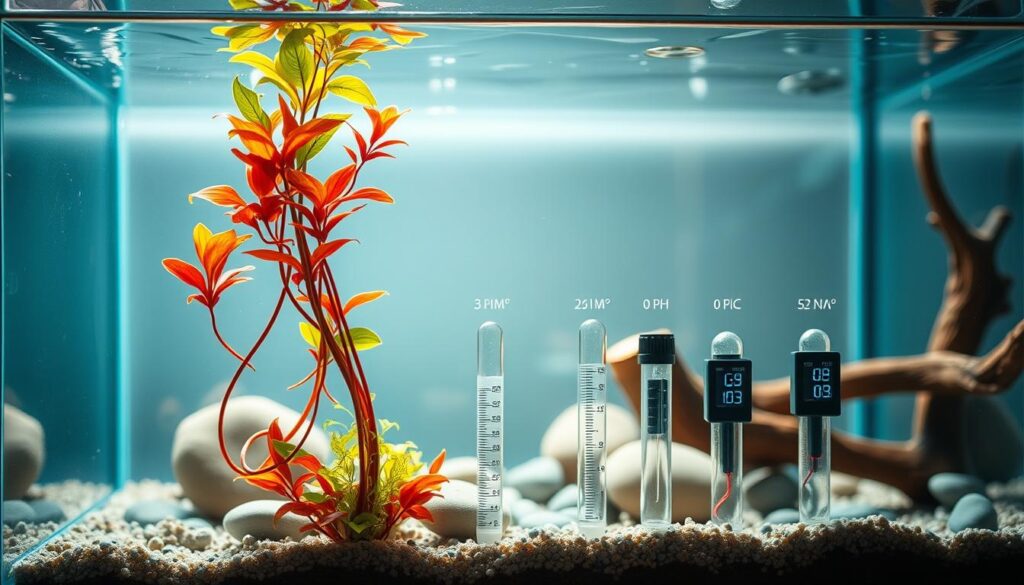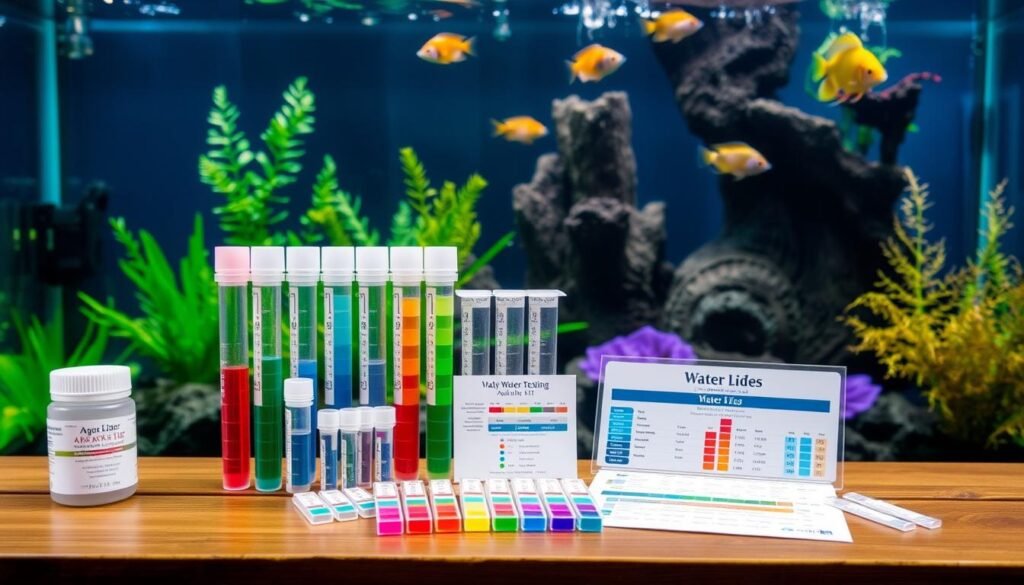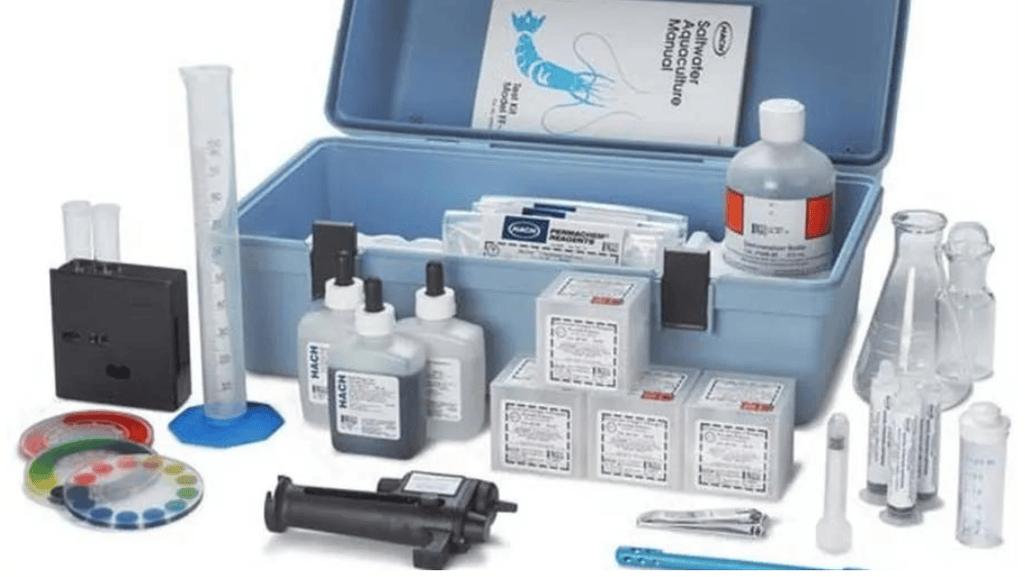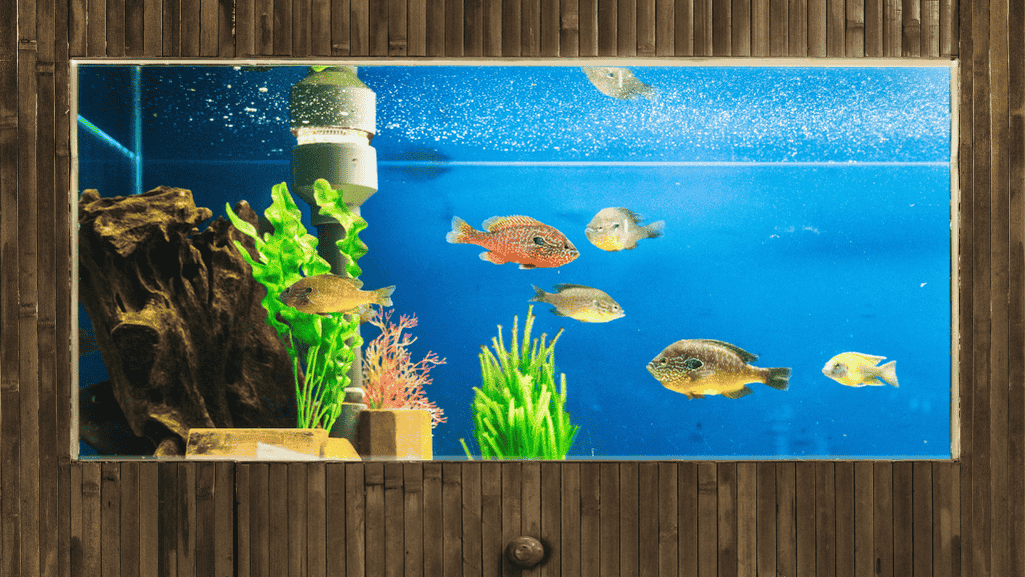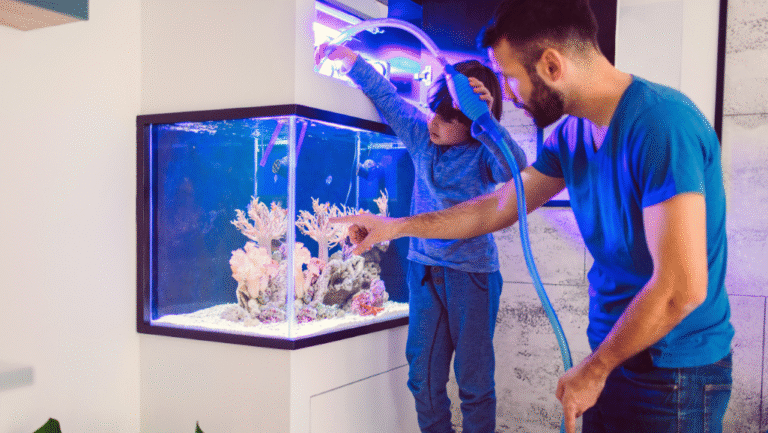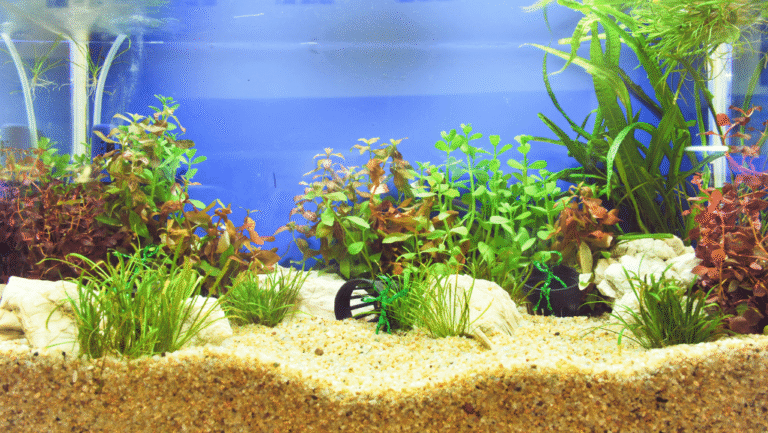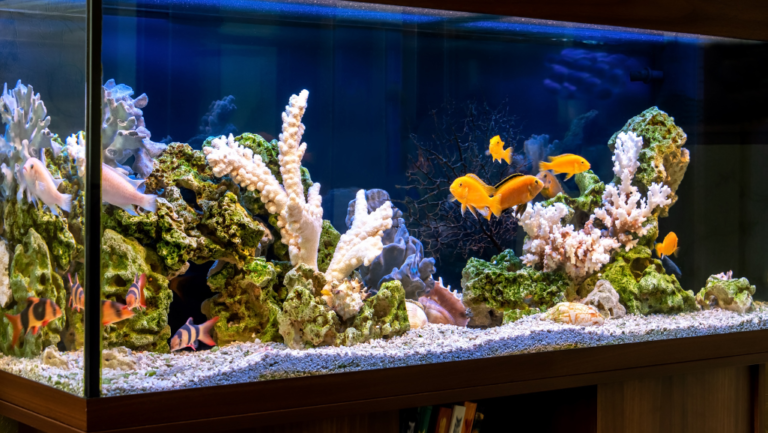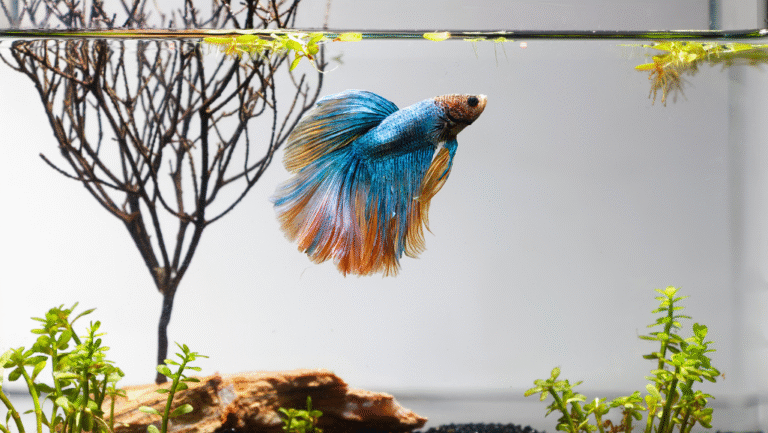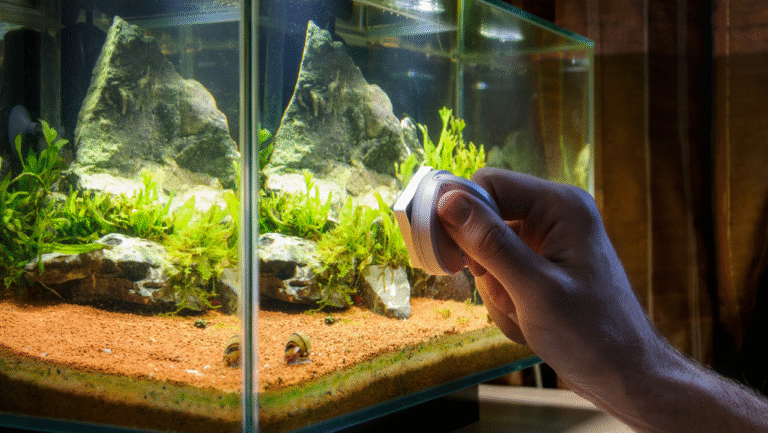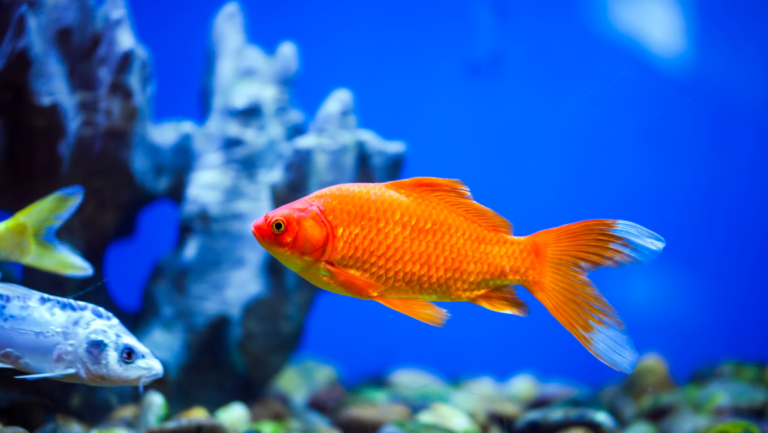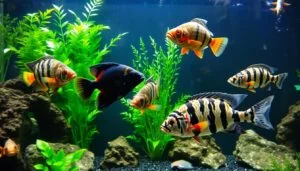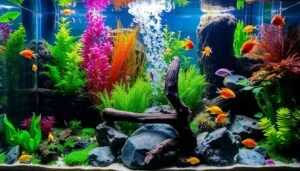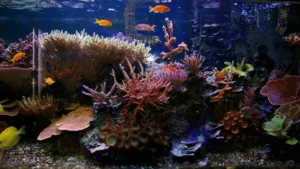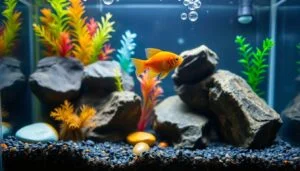Keeping your aquarium water clean is crucial for your fish’s health. You need a reliable best aquarium water testing kit to spot hidden dangers—like toxic ammonia or elevated nitrate—from waste and other sources. Clear water isn’t always safe; testing makes sure every drop supports healthy fish and plants.
Managing an aquarium ecosystem is a careful balance. Even experienced keepers check aquarium water quality test results regularly to catch problems early. Whether you’re new or seasoned, this guide will help you test smarter, interpret results, and make changes that protect your tank.
Key Takeaways
- Invest in a reliable best aquarium water testing kit to detect harmful compounds early—regular testing prevents small issues from becoming tank-wide problems.
- Perform routine aquarium water quality tests to maintain a safe environment for fish and plants; use results to guide water changes and treatments.
- Keep ammonia at 0 ppm and nitrite at 0 ppm whenever possible to protect fish health and tank stability.
- Store aquarium water testing supplies properly (cool, dry, sealed) so strips and reagents stay accurate for years.
- Expired or improperly stored test kits can produce misleading results and put sensitive aquariums at risk—make sure you check expiration dates.
- Monitor parameters like pH, nitrate, GH and KH regularly; routine checks are the best defense against the leading causes of fish mortality.
- Match your testing routine to your fish and system—different species and setups need different targets and response plans.
The Hidden Dangers in Your Aquarium Water
Keeping your aquarium healthy starts with identifying the hidden dangers in the water. Common problems include toxic compounds from waste, nutrient overloads that drive algae, and shifts in carbonate or mineral levels that destabilize pH and stress fish and plants.
Tools that help: using aquarium water quality testers, freshwater aquarium test kits, and saltwater aquarium test kits gives you the quick data you need to act—whether that means a partial water change, filter maintenance, or a change in feeding.
Algae: what each type signals
Algae can be a useful indicator of water issues:
- Green algae often means excess nutrients from overfeeding or organic waste—reduce feeding and increase partial water changes.
- Blue‑green algae (cyanobacteria) forms slimy mats and signals poor water quality and low flow—boost circulation and test for high nitrates or phosphates.
- Brown algae in new tanks is commonly tied to silicates leaching from substrates or decorations—regular testing and targeted media can help.
Carbonates and hardness — what to watch
Carbonate hardness (KH) affects pH stability. In many freshwater setups, carbonate levels around 50–150 ppm support stable pH, while sustained levels above ~200 ppm can drive pH upward and stress some species. Use a freshwater aquarium test kit or a saltwater aquarium test kit to monitor KH and GH and verify with a secondary test if results seem off.
Practical fixes for high carbonate hardness:
- Regular partial water changes to dilute minerals.
- Use reverse osmosis (RO) water blended to target hardness for slow, controllable adjustments.
- Add natural softening agents like peat moss or driftwood to gradually lower hardness.
- When needed, use commercial conditioners formulated to adjust carbonate hardness—follow product instructions and retest after each treatment.
Test your aquarium water often with a dependable aquarium water quality tester so you can spot trends early and take targeted action. Small, consistent steps—testing, logging results, and making measured changes—keep your tank thriving.
Understanding the Essential Aquarium Water Parameters
Video resource:
— a concise walkthrough of common test methods and parameter targets (watch for visual demos of strip and liquid reagent tests).
Keeping core water parameters in range is the foundation of aquarium health. The right best water test kit for aquariums — whether strips, drop (test tube) kits, or digital meters — helps you monitor conditions and act before problems escalate.
A Guide to Ammonia, Nitrite, and Nitrate Levels
Ammonia is highly toxic and should be 0 ppm in a cycled tank; in new setups test ammonia daily during the nitrogen cycle. Use ammonia test strips or liquid test kits (test tubes) for quick readings and confirm unexpected results with a second method.
Nitrite is also dangerous at any detectable level — aim for 0 ppm and test frequently until your biological filtration is established. Nitrate is less acutely toxic but still matters: general guidance is to keep nitrate below 20–40 ppm for planted or sensitive freshwater systems and under 50 ppm for hardy community tanks.
The Importance of pH, GH, and KH in Fish Health
pH affects many chemical reactions in the tank; most freshwater community fish do well between pH 6.5 and 8.0, but target ranges depend on species. Measure pH regularly and after any water changes or treatments.
General hardness (GH) indicates dissolved calcium and magnesium; many freshwater aquariums aim for 4–12 dGH (70–200 ppm) depending on species. Carbonate hardness (KH) buffers pH — typical stable KH for many freshwater tanks is about 3–8 dKH (50–140 ppm). Use a test tube drop kit or digital checker for GH/KH readings and retest if pH swings occur.
Monitoring Chlorine, Phosphate, and Copper
Chlorine and chloramine in tap water must be removed with an appropriate conditioner before adding water to the tank — test source water when switching suppliers or after municipal treatment alerts. Phosphate promotes algae growth; keep phosphate low (often <0.5–1.0 ppm for planted tanks with heavy lighting) and test when algae blooms occur.
Copper test kits are important when using copper-based treatments because copper is toxic to invertebrates and some sensitive fish — always follow dosage guidance and test during medication.
Digital aquarium water tester devices give numeric readings for pH, TDS, and salinity and are great for repeatable results; for broader element analysis consider professional test kits or lab services when dealing with persistent or unexplained issues.
Use the testing schedule and quick-reference parameter chart (see downloadable chart suggestion) to track trends: testing often and logging results is the fastest way to spot problems and protect your aquarium.
Choosing the Right Aquarium Water Testing Kits
Keeping water quality in check is essential for your fish’s health. Choosing the right water quality test kits for aquariums means matching kit type to your experience level and tank goals. Below we compare common options—from accurate aquarium water test strips for quick checks to advanced aquarium water testing supplies for precision—so you can pick the best test kit for your needs.
Advantages of Test Strips Over Test Tubes
Test strips are popular because they are fast, simple, and inexpensive—ideal for routine monitoring. A typical strip pack offers dozens of uses (package counts vary by brand), and you can get results in about a minute: dip, wait a few seconds, then compare the pad to a color chart for a quick reading. Strips are excellent for spotting trends across multiple water parameters without the fuss of reagents or timed chemistry.
Use strips when you want frequent, low-effort checks (e.g., weekly maintenance or after feedings). For confirmation of outlier readings, follow up with a drop (test tube) kit or digital meter.
Options for Digital Aquarium Water Testers
Digital testers give numeric values (no color interpretation) and are extremely useful for pH, TDS, and salinity measurements. Many hobbyists use a digital meter as their day‑to‑day tool and reserve chemical drop kits for parameters that need titration. Digital devices deliver immediate, repeatable numbers—helpful for advanced aquarists managing delicate bioloads or dosing regimens.
Recommended use-cases: digital meters for continuous monitoring of pH/salinity/TDS; strips for quick multi-parameter checks; drop/test tube kits for higher-accuracy results when precise levels matter.
Navigating Through Different Brand Reviews
Reading aquarium water testing kit reviews helps identify reliable models. Brands like API are known for user-friendly master kits (the API Water Test Kit checks nitrite, nitrate, ammonia, and pH), while other producers focus on specialty or professional tools. Look for consistent accuracy, clear instructions, and transparent component counts when comparing products.
Who each kit suits (quick matrix): beginners — strip test kits for easy readings; hobbyists — API-style master test kits for core chemistry; advanced users — digital meters and titration/drop kits for precision.
Good water care is preventive: choose a kit that fits your routine and tank type, and pair it with a log or simple chart to track results over time. If you want, use the internal link to compare top models and view a downloadable color chart for strip interpretation.
| Type of TestAccuracyTime for ResultsEase of Use | |||
| Strip Tests | Good | 1 minute (dip & read) | Very Easy |
| Digital Tests | Very High | Immediate (numeric) | Easy |
| Drop Tests | High | 1–10 minutes (timed reagents, test tubes) | Moderate |
| Permanent Tests | Moderate | Continuous | Setup Required |
How to Test Aquarium Water Correctly
Knowing how to test aquarium water correctly is one of the fastest ways to prevent fish loss and chronic issues. Aquarium water quality testing kits come as strips, digital meters, or liquid/drop (test tube) kits—each has strengths. Strips are great for quick multi-parameter checks, drop kits (test tubes) give higher chemical accuracy, and digital meters deliver numeric readings (pH, TDS, salinity) for repeatable results.
Own your testing: even if stores offer testing, having a kit at home lets you check often and respond quickly. Key parameters to monitor at home are ammonia, nitrite, nitrate, and pH.
- Ammonia: Target 0.0 ppm in cycled tanks. In new tanks, test daily during the cycle and after additions.
- Nitrite: Aim for 0.0 ppm; any detectable nitrite requires immediate attention.
- Nitrate: Keep nitrate generally below 20–40 ppm for planted or sensitive freshwater setups; up to 50 ppm is acceptable for hardy community tanks—pick a target based on your fish and stick to it consistently.
- pH Levels: Many freshwater community fish prefer pH ~6.5–7.5; saltwater systems usually target pH ≥8.0. Test pH monthly and after big changes (water changes, substrate additions, or medication).
Using fish tank water test strips is simple: dip the strip for a few seconds, wait the listed time, then compare the pads to the color chart. For unexpected or critical readings, confirm with a drop (test tube) kit or a digital meter for accuracy.
Quick testing routine:
- Test pH and ammonia weekly in established tanks; test daily for ammonia/nitrite in new setups until cycling completes.
- Log results to spot trends. If nitrate climbs, reduce feeding and do a partial water change (25% is a common starting point), then retest within 24 hours.
- If you use medications or add new livestock, test before and after changes to confirm stability.
Aquarium Water Testing Kits for Freshwater vs. Saltwater Tanks
Choose a freshwater aquarium water testing kit or a saltwater aquarium water testing kit based on the parameters you need. Freshwater kits typically focus on pH, nitrate, nitrite, and ammonia; saltwater kits add salinity and may include alkalinity and calcium checks for marine systems.
The best water testing kit for fish tank setups depends on your priorities: the API Master Test Kit covers core freshwater chemistry (pH, ammonia, nitrite, nitrate) and is a solid mid-range choice, but you may need separate KH, phosphate, or GH tests depending on your goals.
Common specialist options:
- API Master Test Kit: Good core set (pH, ammonia, nitrite, nitrate) for freshwater hobbyists; note that KH, phosphate, and GH are not included.
- Salifert Test Kits: Specialty saltwater kits with high accuracy for marine parameters—excellent for reef or advanced marine systems.
- Hanna Checkers: Precise digital/colorimeter devices for alkalinity, phosphate, and other parameters—recommended when accuracy outweighs cost.
Be aware: some liquid reagents (including certain API ammonia reagents) can degrade after opening or over weeks; store reagents as directed and replace them per manufacturer guidance to avoid inaccurate readings (check expiration dates and the product sheet). Hobbyists on forums like Reef Central often report and discuss reagent shelf life and accuracy concerns—use those community insights but verify with fresh tests.
Many experienced aquarists combine methods: use strips for frequent spot checks, a master or drop kit for confirmation, and a digital meter for ongoing numeric monitoring. That mix gives the best balance of convenience, accuracy, and cost over time. If you want, compare freshwater vs saltwater kit models side-by-side to pick the best combination for your tank.
Top Rated Aquarium Water Testing Kits
Picking the right tools is one of the best investments you can make for long-term aquarium health. The top rated aquarium water test kits combine accuracy, reliability, and coverage of the parameters you care about—setting brands like API, Fritz, Salifert, and select digital makers apart.
Comparing API, Fritz, and Other Industry Leaders
The API Aquarium Test Kit is a widely used master kit for freshwater hobbyists; it covers pH, ammonia, nitrite, and nitrate reliably for routine monitoring. Fritz and Salifert provide specialty kits—especially for marine setups—focusing on phosphate, copper, and other reef-relevant metrics. Digital brands (Hanna, Hanna Checkers, Digital Aquatics) offer precision instruments for alkalinity, pH, TDS, and more.
What Makes a Water Testing Kit Reliable and Accurate
Reliability comes down to consistency, clear instructions, and reagent stability. Liquid titration and drop (test tube) kits are preferred where higher accuracy is needed (for example, phosphate or alkalinity titrations), while test strips are best for fast, frequent trend checks. Digital meters remove color-interpretation error by producing direct numeric readings for pH, TDS, and salinity.
The best professional aquarium water testing kits and devices cover a broad parameter set and are supported by clear documentation and stable reagents or calibration procedures. For critical or unexplained issues, lab testing or professional services provide the deepest analysis.
| Kit TypeParameters TestedSuitability | ||
| API Freshwater Master Test Kit | pH, Ammonia, Nitrite, Nitrate | Freshwater hobbyists (budget/mid-level) |
| Fritz / Salifert Specialty Kits | Phosphate, Copper, specific marine metrics | Marine / reef or specialist needs |
| Digital Aquatics / Hanna Checkers | Alkalinity, pH, TDS, colorimetric checks | Advanced monitoring / precision |
Quick “Best For” Picks
- Best budget / starter: API Master Test Kit — covers core freshwater chemistry, easy to use, good value for routine testing.
- Best saltwater / reef accuracy: Salifert or Fritz specialty kits — more targeted reagents for marine parameters like phosphate and copper.
- Best digital / precision: Hanna/Hanna Checkers or Digital Aquatics — numeric accuracy for alkalinity, pH, and other repeatable measurements.
When and How Often to Test Your Aquarium Water
How often you test depends on tank age and stability. New tanks: test daily (ammonia, nitrite, nitrate) during the nitrogen cycle. Established tanks: test every two weeks to monthly for core parameters, and immediately after changes like medication, new livestock, or significant maintenance.
- Daily (new setups): ammonia, nitrite, nitrate.
- Weekly to monthly (established tanks): pH, nitrate, and spot-checks for ammonia/nitrite.
- After changes: test immediately after water changes, treatments, or adding livestock.
Testing triggers include fish illness, algae blooms, strange odor, or sudden behavior changes in fish—test immediately and follow with corrective actions based on results.
Cost-Effective Solutions: Affordable Aquarium Water Testing Kits
Keeping costs reasonable doesn’t mean sacrificing care—many cost-effective kits provide the parameters most hobbyists need. The API Master Test Kit remains a solid value for basic freshwater testing. For targeted or advanced needs (KH, phosphate, trace elements), consider supplementing with individual tests or occasional lab analysis.
- API Master Test Kit — good core coverage at a low price.
- Individual phosphate or GH/KH kits — add only what your tank requires.
- Consider a single digital meter for pH/TDS if you want repeatable numeric results that reduce repeat reagent purchases.
Liquid titration kits cost more but deliver greater precision and fewer repeat purchases for some parameters. Test strips are inexpensive and convenient but can lose accuracy over time—buy from reputable sellers, store per instructions, and validate surprising readings with a secondary method.
| Test Kit ComponentAPI Master Test KitNecessity After CyclingRemarks | |||
| Nitrate | Included | Essential | Continuous monitoring advisable |
| Phosphate | Not included | Essential for algae control | Buy separately if algae is an issue |
| General Hardness (GH) | Not included | Essential for some species | Consider GH test if keeping sensitive plants or fish |
| Carbonate Hardness (KH) | Not included | Essential for stable pH | Buy KH test for pH stability checks |
Choosing the best water test kit for aquariums is about your tank’s needs and your budget: combine strips for routine monitoring, a master test kit for chemistry checks, and a digital meter or occasional lab testing for precision. Make sure to store reagents correctly and replace them per manufacturer guidance for reliable results over time. For detailed product comparisons or to download a testing schedule, see the linked resources.
Professional Aquarium Water Testing Kits for Advanced Hobbyists
For serious hobbyists and reef keepers, professional aquarium water testing kits and lab analyses are invaluable. These options measure many trace elements and micronutrients that in-home kits can miss, helping you optimize conditions for sensitive corals, invertebrates, and specialty fish.
Advanced aquarium water testing supplies from labs and pro services (and brands like ATI and Triton) provide deeper insight into your water chemistry. Use them when you face unexplained die-offs, persistent algae or coral color loss, or when you want to fine-tune dosing for a reef system.
ICP-OES analysis (Inductively Coupled Plasma Optical Emission Spectrometry) is a standout lab method that detects low‑level elements and contaminants. Typical turnaround and parameter coverage vary by provider; here are common options and approximate capabilities:
| BrandParameters CoveredTechnology UsedTurnaround | |||
| CoralVue (ICP-Analysis.com) | 40+ | ICP-OES | ~48 hours |
| ATI Lab | 43 | ICP-OES, barcoded vials | ~2 weeks |
| Triton Lab | 36 | ICP-OES, proprietary indicators | Varies |
| Aqua Medic AWT | 13 | Colorimeters, spectrometers | Standard lab time |
When to choose lab testing vs in-home kits:
- Choose in-home test kits (strips, drop tests, digital) for routine monitoring and troubleshooting common parameters (ammonia, nitrite, nitrate, pH, KH, GH).
- Opt for professional ICP-OES or comprehensive lab panels when problems persist despite correct in-home readings, or when managing high-value reefs where trace elements matter.
Maximizing the Lifespan of Your Aquarium Testing Supplies
Proper storage and maintenance of test kit components keep your results reliable and extend the life of reagents, strips, and digital devices. Follow manufacturer storage instructions and replace reagents on the schedule recommended in product literature.
Best-practice maintenance:
| Test Kit ComponentStorage TipsMaintenance Tips | ||
| Test Strips | Store in original sealed container in a cool, dry place; limit humidity exposure. | Do not touch reactive pads; close container promptly; use before expiration. |
| Digital Testers | Keep away from extreme temps; store upright in a protective case. | Calibrate per manufacturer (pH meters often weekly or before critical tests); replace batteries regularly. |
| Liquid / Drop Kits | Avoid direct sunlight and temperature swings; keep caps tight. | Note manufacture date; discard reagents after expiration or if color changes occur; cap tightly to prevent evaporation. |
Recommended replacement and calibration cadence (general guidance): calibrate pH meters before important tests or monthly for regular users; replace opened liquid reagents within the manufacturer-recommended window (commonly months to a year depending on product); check strip expiry dates and storage integrity before use.
Record-keeping: keep a simple log (date, kit/product used, parameters tested, numeric results, actions taken). A short CSV or spreadsheet template makes trend spotting easier and helps professionals or labs interpret your sample history if you send water for analysis.
Following these steps lengthens the useful life of your testing supplies and ensures the data you collect supports confident adjustments to dosing, water changes, and maintenance—helping you maintain a healthy freshwater aquarium or complex reef system.
Diagnosing and Solving Common Fish Tank Issues with Water Tests
Maintaining stable water chemistry is the fastest way to prevent common fish tank problems. Using reliable water test kits helps you diagnose issues early and apply targeted solutions so your fish and plants recover quickly.
By using water test kits effectively, you can detect dangerous spikes in ammonia or nitrite (both should be 0 ppm in a healthy tank) and spot trends in pH, alkalinity, and nitrate that indicate underlying issues. Test regularly and act on the results to avoid losses.
| ParameterIdeal Conditions (guidance)Recommended Testing Method | ||
| Ammonia | 0 ppm — toxic to fish | Ammonia test strips or liquid test (confirm with drop test) |
| Nitrite | 0 ppm — harmful | Multi-test strips or drop kits |
| Nitrate | Keep generally below 20–40 ppm for sensitive/planted tanks; ≤50 ppm for hardy community tanks | Multi-test strips or liquid kits |
| Chlorine / Chloramine | 0 ppm in tank water (treat source water) | Multi-test strips; test source (tap) water if concerned |
| pH (Freshwater) | 6.5 – 8.0 (species dependent) | Multi-test strips, digital meter, or test tubes |
| General Hardness (GH) | ~4–12 dGH (70–200 ppm) depending on species | Liquid GH test (test tubes) or strip |
| Carbonate Hardness (KH) | ~3–8 dKH (50–140 ppm) for pH stability | KH test (drop/test tube) |
| Phosphate | 0.1–1.0 ppm for most tanks; 0.5–3 ppm guidance varies with lighting and plants | Fritz Phosphate Test Kit or similar |
| Copper | Depends on medication use — toxic to invertebrates | Fritz Copper Test Kit or equivalent |
| CO2 | Varies with planted tank conditions | Dennerle CO2 Quick Test or drop kit |
Regular testing keeps your tank stable and helps plants thrive and fish stay healthy. When a parameter is out of range, use targeted solutions rather than broad changes—this reduces stress on livestock.
Quick troubleshooting steps
- High ammonia or nitrite: do an immediate 25–50% partial water change, check filter function, reduce feeding, and consider adding ammonia detoxifier while resolving the biological filter.
- High nitrate: perform a 25% water change, reduce feeding, clean substrate if needed, and increase plant uptake or use nitrate-specific media.
- pH swings: check KH (buffering). If KH is low, raise it gradually with buffering products or partial water changes; if KH is high, use RO water blends to adjust slowly.
- Algae blooms: test phosphate and nitrate; reduce light or nutrients, perform partial water changes, and consider phosphate-absorbing media.
Conclusion
Maintaining a healthy aquarium requires consistent testing and measured responses. The right aquarium water testing kits—used with a clear testing schedule and a simple log—let you track trends, spot problems early, and apply effective solutions.
Some kits give fast, easy readings; others provide deeper, more precise data. Combine methods (strips for quick checks, drop kits for confirmation, digital meters for numeric tracking) to cover both routine maintenance and detailed troubleshooting.
Use this guide as a checklist: test first, interpret results, then apply the least invasive fix. Make sure to log your readings and repeat tests after corrective actions so you can confirm recovery.
